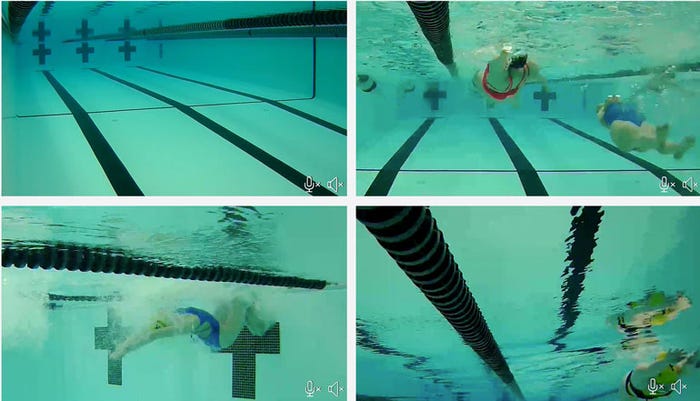How Intelligent Live Streaming Can Save Lives
A San Francisco startup is teaming up with HPE to bring its technology to first responders, hospitals, and beyond.
April 20, 2017

After selling his fraud-detection startup Bharosa to Oracle nearly a decade ago, the serial entrepreneur Jon Fisher found inspiration for his next venture by gazing at boats from his deck in Tiburon, CA. “I wanted to be able to aim my phone at moving boats on the water to get more information about them—such as their location,” he recounts.
Fisher determined that he needed to develop custom triangulation algorithms for the task. He then began to work a handful of collaborators to develop those algorithms and sensed that the technology has vast applications. It can, for instance, track the interest of smartphone-toting audiences at crowded events, and to stitch together data points from such devices to provide a god-like perspective. It could also push, say, the best-quality video streams to a stadium TV screen or the internet. In 2011, he decided to cofound the company CrowdOptic to commercialize their work.
More recently, however, he’s seeing that the technology can do a lot more. For one thing, the startup is interconnecting video feeds with IoT sensor and biometric data. Thanks in part to a partnership with HPE, Fisher says the volume of use cases for the technology is exploding—and that there is a steady uptick of applications where it can prevent injuries or fatalities. “HPE intelligent live streaming leveraging algorithms and analytics can create actionable alerts that can save lives,” Fisher says, who is the startup’s CEO.
The company is also working with first responders to rig their vehicles with eight separate video cameras pointed in different directions. An in-vehicle HPE Edgeline computer with CrowdOptic algorithms analyze the video streams and spot anomalies in the environment, making it possible for first responders to respond more quickly to emergencies. Clients include the California ambulance company Protransport-1 and one of the largest police departments in China.
The technology makes a lot of sense in police cars, Fisher says. “You already have Wi-Fi in modern vehicles. The premise is: shouldn’t the police be able to do everything and more than what the consumers can do with live streaming?” he asks. The technology gives police officers an omnidirectional view of their surroundings while capturing video that can also serve as evidence. “But the police are burdened by costs.” It’s not feasible, he says, for police departments to pay for LTE video streaming costs for each officer. “You can get rid of that by having a server in the car,” Fisher explains. “That’s the 'oh-wow' factor. You are putting a computer with processing power into moving vehicles.”
The same principle applies to other types of vehicles as well—like snow plows. “We have a use case where this technology is getting pushed in medical carts,” Fisher says. The medical device giant Medtronic uses the technology to broadcast the surgeon’s point-of-view to sales personnel worldwide. “This highly sensitive transmission is often kept off the cloud for HIPAA compliance hence the need for a local server,” Fisher notes.
CrowdOptic is even working to deploy the technology at zoos. “We can even use the technology to examine the real-time behavior of animals to increase their lifespans,” Fisher adds. “Dozens of CrowdOptic cameras monitor the wolf exhibit at the San Francisco Zoo in real time to help the zoo monitor animal behavior. “The animals are tracked using motion capture and analytics requiring robust and rugged server processing at the edge,” Fisher says. “Understanding the animals at this level enables better care and research.”
Ultimately Fisher anticipates the technology to find growing use in cities. “The future vision for the tech is to see it deployed by entire smart cities thereby connecting cameras in new, contextually-relevant—even life-saving—ways,” he says. “Imagine the cameras and system wired into school buses transporting our children. You could understand the bus trajectory and performance in real time to create actionable alerts ranging from protecting the children against a distracted bus driver to protecting the bus driver against a chaotic event around the corner.” That’s just one example of how this technology could work.
“In addition, soon you will see HPE's Edgeline server available as standard equipment for processing intelligent live streaming underwater,” Fisher says. “You’ll see this bundled with industrial swimming pools. This returns me to the water—if not the ocean—where the idea was born.”

About the Author
You May Also Like






